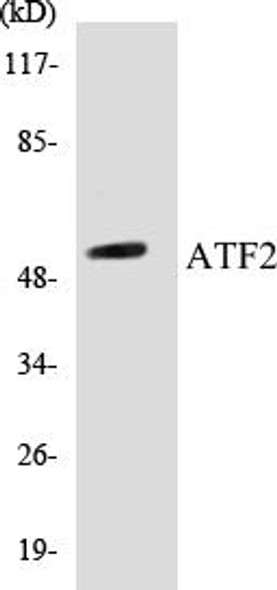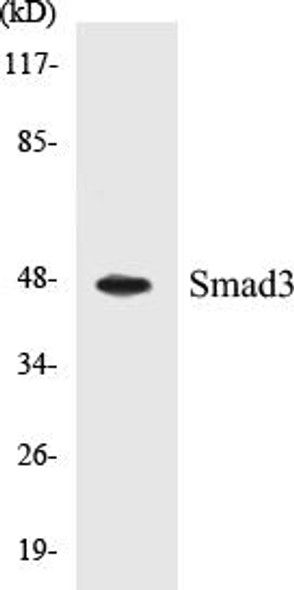Signal Transduction
PGP9.5 Colorimetric Cell-Based ELISA Kit
- SKU:
- CBCAB00809
- Product Type:
- ELISA Kit
- ELISA Type:
- Cell Based
- Research Area:
- Signal Transduction
- Reactivity:
- Human
- Reactivity:
- Mouse
- Reactivity:
- Rat
- Detection Method:
- Colorimetric
Description
| Product Name: | PGP9.5 Colorimetric Cell-Based ELISA |
| Product Code: | CBCAB00809 |
| ELISA Type: | Cell-Based |
| Target: | PGP9.5 |
| Reactivity: | Human, Mouse, Rat |
| Dynamic Range: | > 5000 Cells |
| Detection Method: | Colorimetric 450 nmStorage/Stability:4°C/6 Months |
| Format: | 96-Well Microplate |
The PGP9.5 Colorimetric Cell-Based ELISA Kit is a convenient, lysate-free, high throughput and sensitive assay kit that can detect PGP9.5 protein expression profile in cells. The kit can be used for measuring the relative amounts of PGP9.5 in cultured cells as well as screening for the effects that various treatments, inhibitors (ie siRNA or chemicals), or activators have on PGP9.5.
Qualitative determination of PGP9.5 concentration is achieved by an indirect ELISA format. In essence, PGP9.5 is captured by PGP9.5-specific primary antibodies while the HRP-conjugated secondary antibodies bind the Fc region of the primary antibody. Through this binding, the HRP enzyme conjugated to the secondary antibody can catalyze a colorimetric reaction upon substrate addition. Due to the qualitative nature of the Cell-Based ELISA, multiple normalization methods are needed:
| 1. | A monoclonal antibody specific for human GAPDH is included to serve as an internal positive control in normalizing the target absorbance values. |
| 2. | Following the colorimetric measurement of HRP activity via substrate addition, the Crystal Violet whole-cell staining method may be used to determine cell density. After staining, the results can be analysed by normalizing the absorbance values to cell amounts, by which the plating difference can be adjusted. |
| Database Information: | Gene ID: 7345, UniProt ID: P09936, OMIM: 191342, Unigene: Hs.518731 |
| Gene Symbol: | UCHL1 |
| Sub Type: | None |
| UniProt Protein Function: | UCHL1: Ubiquitin-protein hydrolase involved both in the processing of ubiquitin precursors and of ubiquitinated proteins. This enzyme is a thiol protease that recognizes and hydrolyzes a peptide bond at the C-terminal glycine of ubiquitin. Also binds to free monoubiquitin and may prevent its degradation in lysosomes. The homodimer may have ATP-independent ubiquitin ligase activity. Monomer. Homodimer. Interacts with SNCA. Interacts with COPS5. Found in neuronal cell bodies and processes throughout the neocortex. Expressed in neurons and cells of the diffuse neuroendocrine system and their tumors. Weakly expressed in ovary. Down-regulated in brains from Parkinson disease and Alzheimer disease patients. Belongs to the peptidase C12 family. |
| UniProt Protein Details: | Protein type:Ubiquitin conjugating system; Cell development/differentiation; Ligase; Protease; EC 3.4.19.12 Chromosomal Location of Human Ortholog: 4p14 Cellular Component: nucleoplasm; endoplasmic reticulum membrane; cell soma; axon; cytoplasm; plasma membrane; cytosol Molecular Function:ubiquitin binding; omega peptidase activity; protein binding; cysteine-type endopeptidase activity; ubiquitin-specific protease activity; alpha-2A adrenergic receptor binding; ligase activity Biological Process: cell proliferation; proteasomal ubiquitin-dependent protein catabolic process; negative regulation of MAP kinase activity; axon transport of mitochondrion; protein deubiquitination; axon target recognition; eating behavior; neuromuscular process; muscle fiber development; sensory perception of pain; adult walking behavior Disease: Neurodegeneration With Optic Atrophy, Childhood-onset; Parkinson Disease 5, Autosomal Dominant |
| NCBI Summary: | The protein encoded by this gene belongs to the peptidase C12 family. This enzyme is a thiol protease that hydrolyzes a peptide bond at the C-terminal glycine of ubiquitin. This gene is specifically expressed in the neurons and in cells of the diffuse neuroendocrine system. Mutations in this gene may be associated with Parkinson disease.[provided by RefSeq, Sep 2009] |
| UniProt Code: | P09936 |
| NCBI GenInfo Identifier: | 136681 |
| NCBI Gene ID: | 7345 |
| NCBI Accession: | P09936.2 |
| UniProt Secondary Accession: | P09936,Q4W5K6, Q71UM0, |
| UniProt Related Accession: | P09936 |
| Molecular Weight: | 223 |
| NCBI Full Name: | Ubiquitin carboxyl-terminal hydrolase isozyme L1 |
| NCBI Synonym Full Names: | ubiquitin carboxyl-terminal esterase L1 (ubiquitin thiolesterase) |
| NCBI Official Symbol: | UCHL1 |
| NCBI Official Synonym Symbols: | NDGOA; PARK5; PGP95; PGP9.5; Uch-L1; HEL-117; PGP 9.5 |
| NCBI Protein Information: | ubiquitin carboxyl-terminal hydrolase isozyme L1; ubiquitin thioesterase L1; epididymis luminal protein 117; neuron cytoplasmic protein 9.5; ubiquitin C-terminal hydrolase |
| UniProt Protein Name: | Ubiquitin carboxyl-terminal hydrolase isozyme L1 |
| UniProt Synonym Protein Names: | Neuron cytoplasmic protein 9.5; PGP 9.5; PGP9.5; Ubiquitin thioesterase L1 |
| Protein Family: | Ubiquitin carboxyl-terminal hydrolase |
| UniProt Gene Name: | UCHL1 |
| UniProt Entry Name: | UCHL1_HUMAN |
| Component | Quantity |
| 96-Well Cell Culture Clear-Bottom Microplate | 2 plates |
| 10X TBS | 24 mL |
| Quenching Buffer | 24 mL |
| Blocking Buffer | 50 mL |
| 15X Wash Buffer | 50 mL |
| Primary Antibody Diluent | 12 mL |
| 100x Anti-Phospho Target Antibody | 60 µL |
| 100x Anti-Target Antibody | 60 µL |
| Anti-GAPDH Antibody | 60 µL |
| HRP-Conjugated Anti-Rabbit IgG Antibody | 12 mL |
| HRP-Conjugated Anti-Mouse IgG Antibody | 12 mL |
| SDS Solution | 12 mL |
| Stop Solution | 24 mL |
| Ready-to-Use Substrate | 12 mL |
| Crystal Violet Solution | 12 mL |
| Adhesive Plate Seals | 2 seals |
The following materials and/or equipment are NOT provided in this kit but are necessary to successfully conduct the experiment:
- Microplate reader able to measure absorbance at 450 nm and/or 595 nm for Crystal Violet Cell Staining (Optional)
- Micropipettes with capability of measuring volumes ranging from 1 µL to 1 ml
- 37% formaldehyde (Sigma Cat# F-8775) or formaldehyde from other sources
- Squirt bottle, manifold dispenser, multichannel pipette reservoir or automated microplate washer
- Graph paper or computer software capable of generating or displaying logarithmic functions
- Absorbent papers or vacuum aspirator
- Test tubes or microfuge tubes capable of storing ≥1 ml
- Poly-L-Lysine (Sigma Cat# P4832 for suspension cells)
- Orbital shaker (optional)
- Deionized or sterile water
*Note: Protocols are specific to each batch/lot. For the correct instructions please follow the protocol included in your kit.
| Step | Procedure |
| 1. | Seed 200 µL of 20,000 adherent cells in culture medium in each well of a 96-well plate. The plates included in the kit are sterile and treated for cell culture. For suspension cells and loosely attached cells, coat the plates with 100 µL of 10 µg/ml Poly-L-Lysine (not included) to each well of a 96-well plate for 30 minutes at 37°C prior to adding cells. |
| 2. | Incubate the cells for overnight at 37°C, 5% CO2. |
| 3. | Treat the cells as desired. |
| 4. | Remove the cell culture medium and rinse with 200 µL of 1x TBS, twice. |
| 5. | Fix the cells by incubating with 100 µL of Fixing Solution for 20 minutes at room temperature. The 4% formaldehyde is used for adherent cells and 8% formaldehyde is used for suspension cells and loosely attached cells. |
| 6. | Remove the Fixing Solution and wash the plate 3 times with 200 µL 1x Wash Buffer for five minutes each time with gentle shaking on the orbital shaker. The plate can be stored at 4°C for a week. |
| 7. | Add 100 µL of Quenching Buffer and incubate for 20 minutes at room temperature. |
| 8. | Wash the plate 3 times with 1x Wash Buffer for 5 minutes each time. |
| 9. | Add 200 µL of Blocking Buffer and incubate for 1 hour at room temperature. |
| 10. | Wash 3 times with 200 µL of 1x Wash Buffer for 5 minutes each time. |
| 11. | Add 50 µL of 1x primary antibodies (Anti-PGP9.5 Antibody and/or Anti-GAPDH Antibody) to the corresponding wells, cover with Parafilm and incubate for 16 hours (overnight) at 4°C. If the target expression is known to be high, incubate for 2 hours at room temperature. |
| 12. | Wash 3 times with 200 µL of 1x Wash Buffer for 5 minutes each time. |
| 13. | Add 50 µL of 1x secondary antibodies (HRP-Conjugated AntiRabbit IgG Antibody or HRP-Conjugated Anti-Mouse IgG Antibody) to corresponding wells and incubate for 1.5 hours at room temperature. |
| 14. | Wash 3 times with 200 µL of 1x Wash Buffer for 5 minutes each time. |
| 15. | Add 50 µL of Ready-to-Use Substrate to each well and incubate for 30 minutes at room temperature in the dark. |
| 16. | Add 50 µL of Stop Solution to each well and read OD at 450 nm immediately using the microplate reader. |
(Additional Crystal Violet staining may be performed if desired – details of this may be found in the kit technical manual.)






